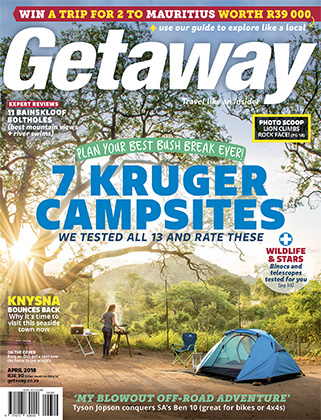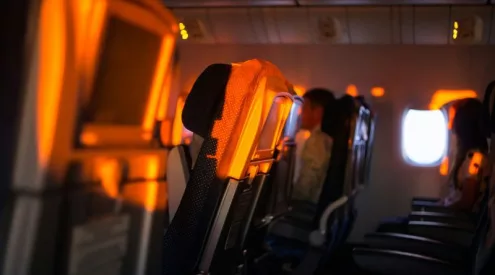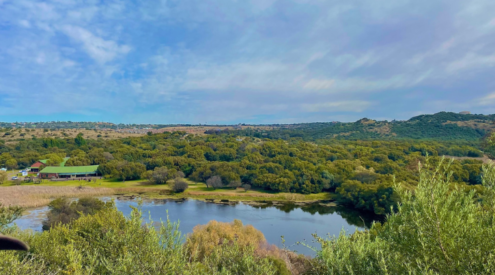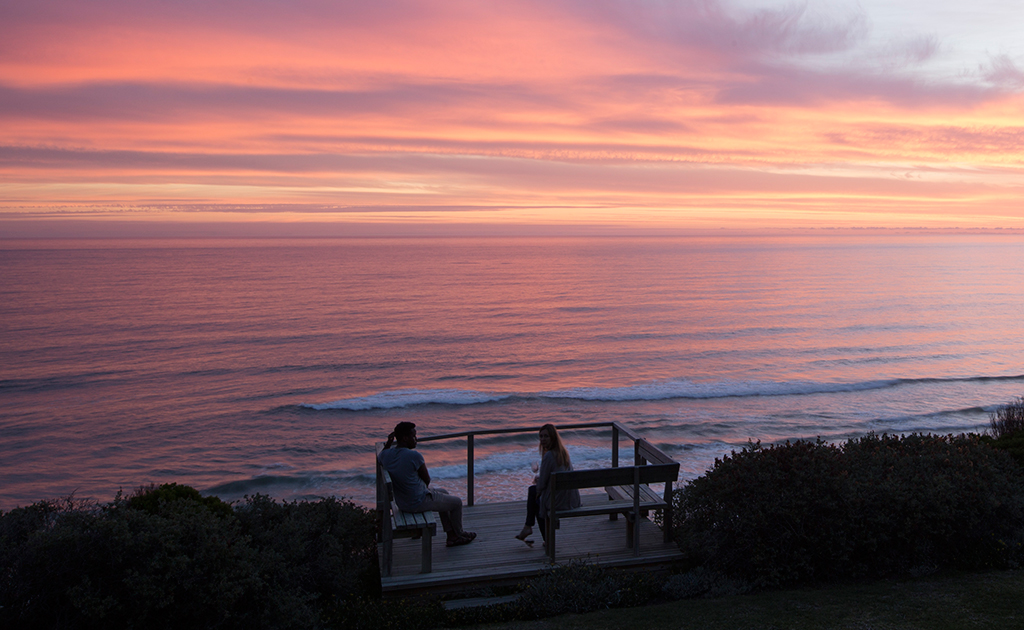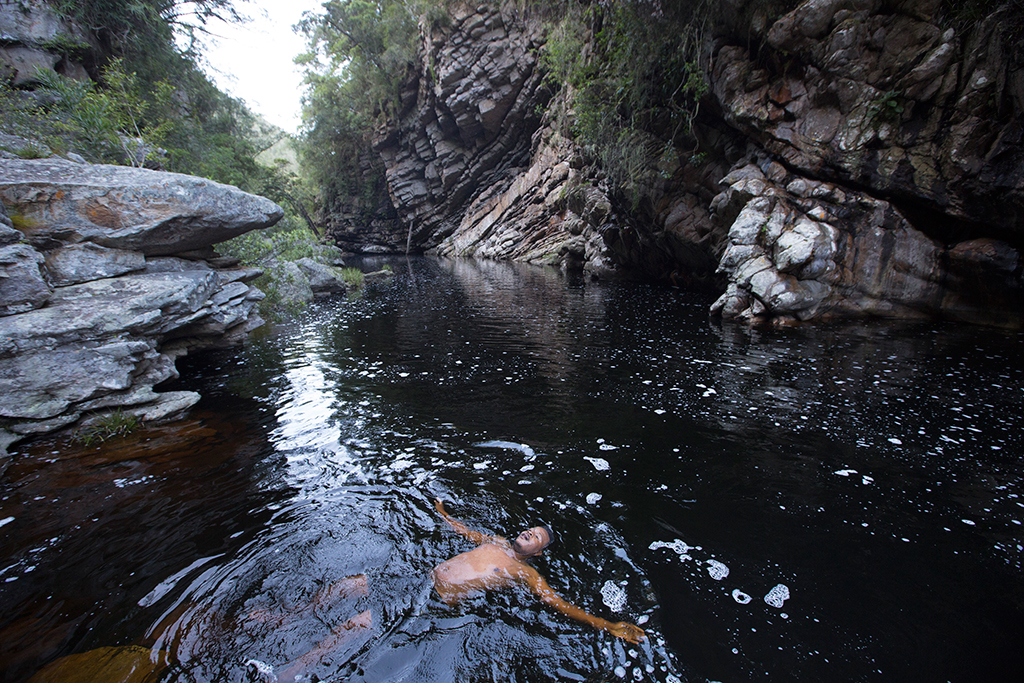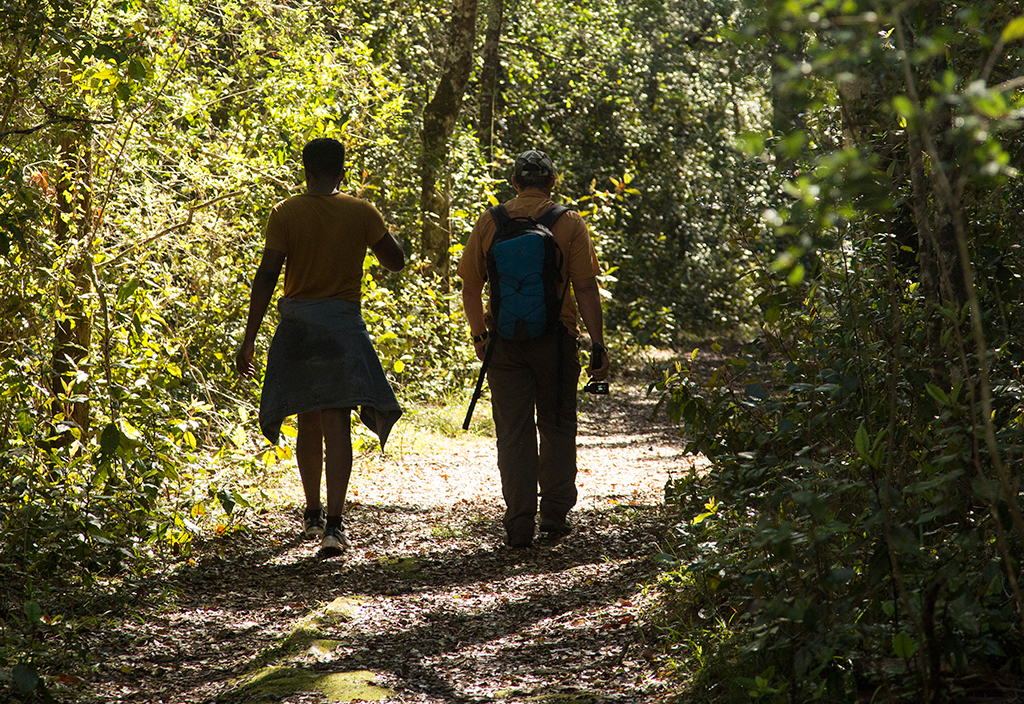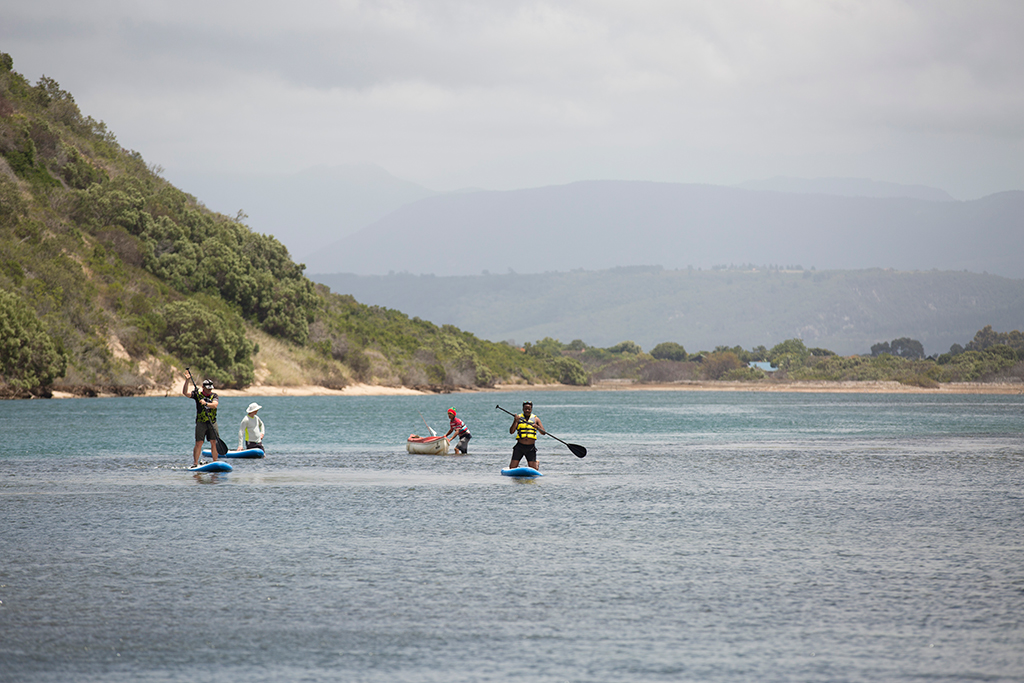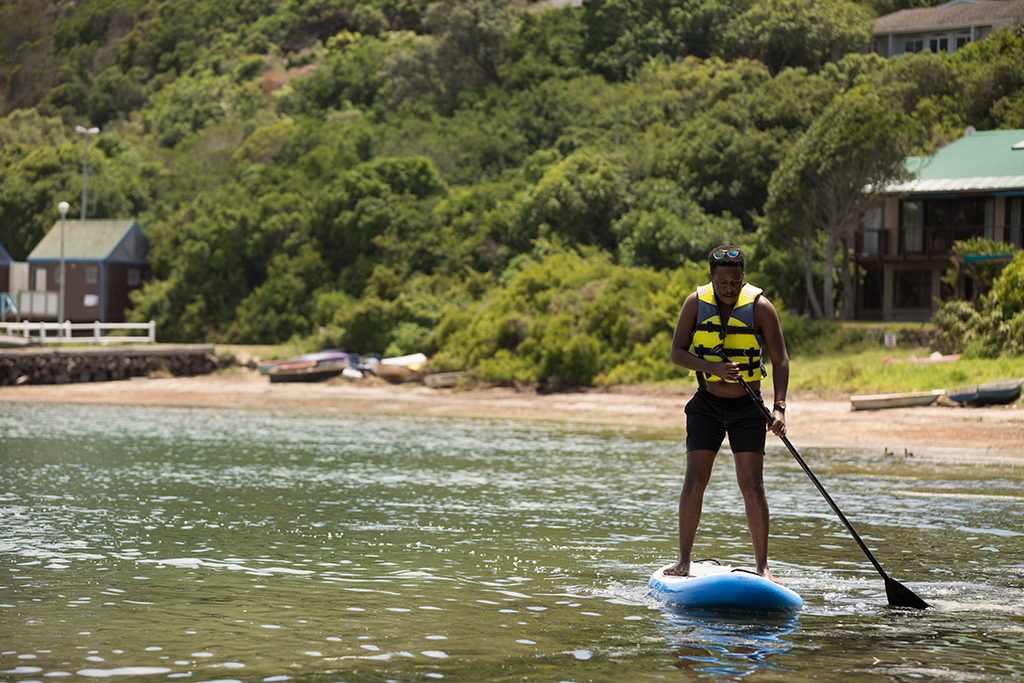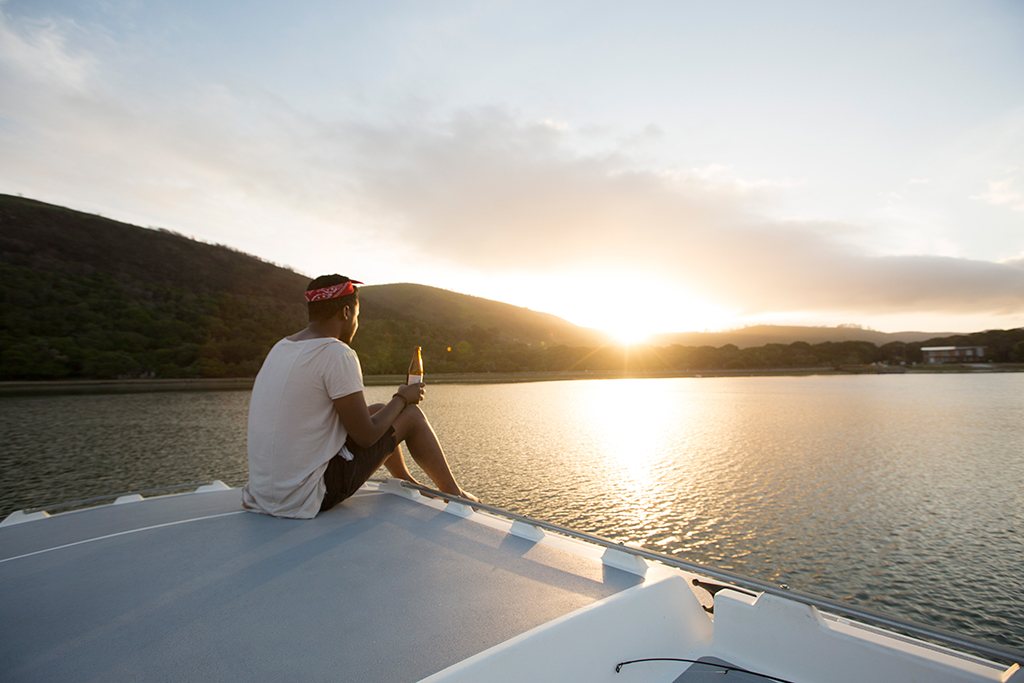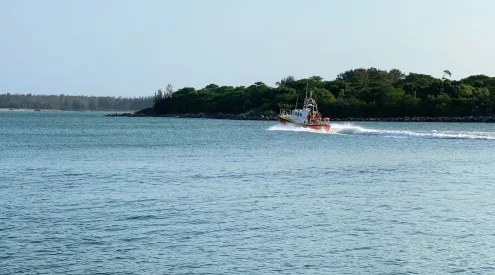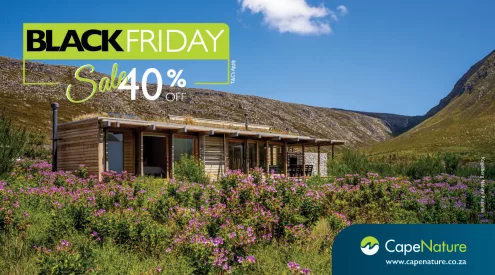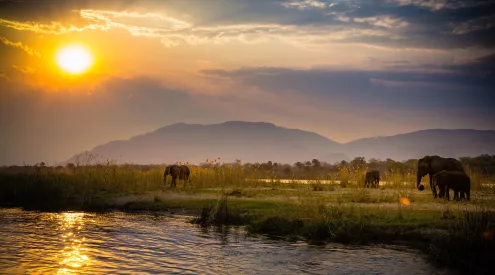It’s been a year since the Knysna area suffered one of the worst fire disasters in years. But now it’s blossoming again and its forests, estuaries and generous locals are ready as ever to welcome visitors.
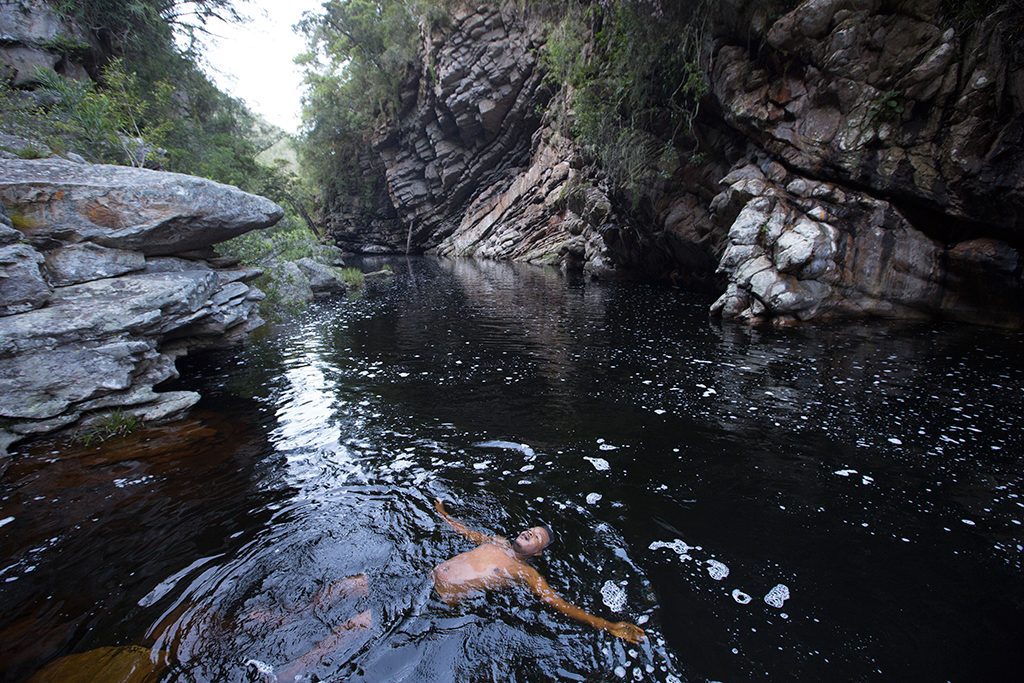
A dip in this pool is a great reward at the end of the Drupkelders Trail. Photograph by Gareth Van Nelson.
I was in Cape Town when my grandmother in Pretoria called to warn me about the fires in Knysna.‘I’m at least five hours away,’ I assured her. ‘There’s no way the fires will reach me.’ ‘I’m watching a broadcast of it. I don’t think you understand how huge it is,’ she protested.
She was right about that.
The flames swept through at least 100 kilometres of the Eden District, taking with them six lives and leaving more than 1000 buildings damaged and about 10000 residents evacuated from their homes. Two of Knysna’s top tourist destinations, the Featherbed Nature Reserve and the Brenton Blue Butterfly Reserve, home to the endangered endemic butterfly, were severely damaged.
Although the area was left reeling, it saw one of the biggest aid drives in the country. At the height of the inferno, many locals who had lost everything refused to wallow in complete despair and continued to help their neighbours battle the flames.
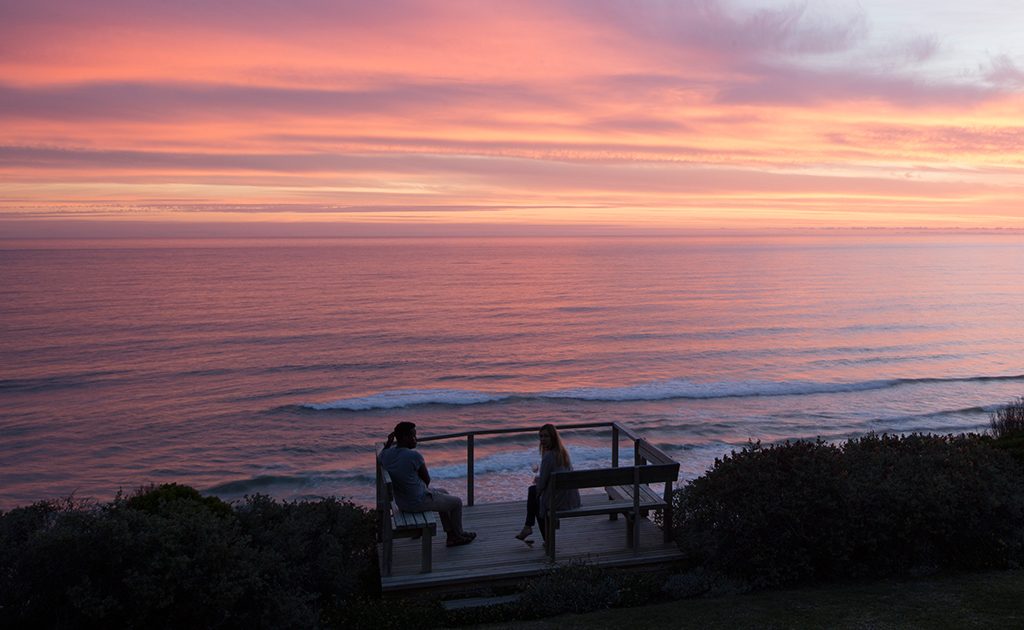
The priceless view from the deck at Dover on Sea B&B. Photograph by Gareth Van Nelson.
It’s this magnanimity and resilience that has driven me to explore the area, along with Knysna’s green forests, tranquil lagoon and wild trails. It’s been six months since the fires (in early June 2017) and I’m driving through Sedgefield with photographer Gareth van Nelson. He points at the trees on the far side of the road and says that’s how far the fires travelled. It’s the start of summer, but they look like autumn-leaved trees with black stems. But in some patches, green shoots sprout from the charred ground. The landscape looks dramatic, this new growth verdant against the dark earth.
Knysna is celebrated for many things – oysters, seahorses, the Brenton blue and the Knysna Heads, but it’s the forests and the lagoon that are the jewels of this coastal town. The forests, which cover more than 60000 hectares of land from George to Tsitsikamma, are South Africa’s largest swathe of Southern Afrotemperate forest. It was mostly alien trees and fynbos that burnt, and a small portion of the human settlements. Only small pockets of indigenous forest were damaged by the fire.
As for the Brenton blue, Dr David Edge, whose PhD focused on this endangered butterfly, has been working with researchers to find ways to rehabilitate the reserve to encourage the butterfly to return. So far, they’ve discovered that the larva host was protected by ant nests that survived the fire, which gives some hope that all is not lost.
For the vast majority of residents in Knysna, Sedgefield and surrounding areas, it’s business as usual. In the pipeline is the Garden Route Rebuild Initiative, with R75 million to be made available by the Western Cape government to assist businesses, locals and the municipalities to recover from the disaster.
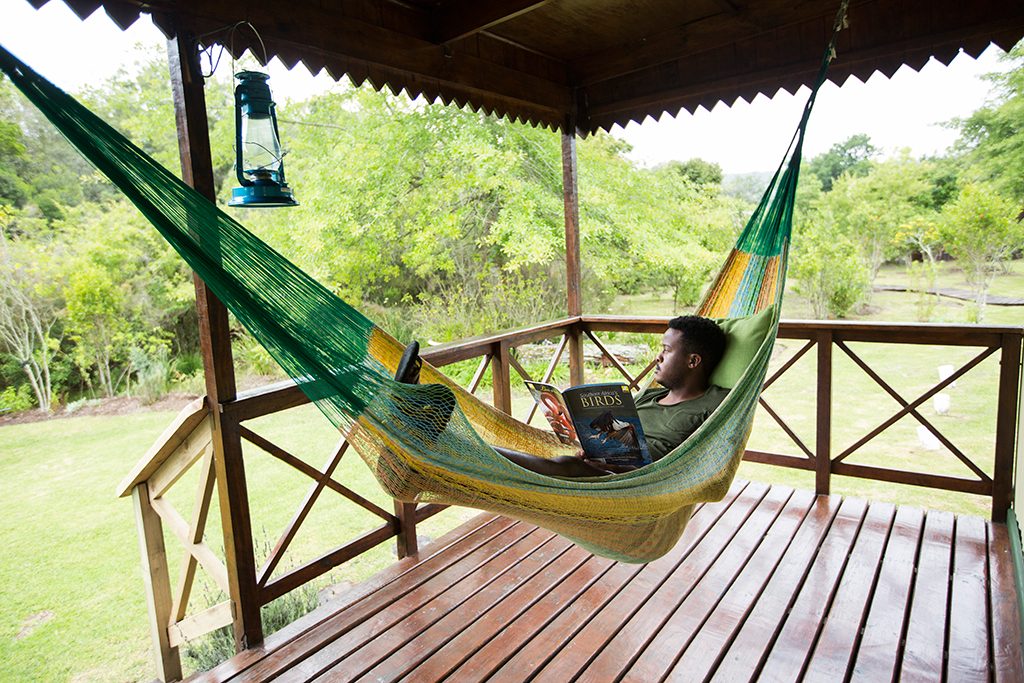
Forest Edge is located on the edge of Knysna’s forests and by the entrance to the Drupekelders hiking trail. Photograph by Gareth Van Nelson.
On our first morning, we wake to the sound of chirping birds and the sight of leaves dancing on the trees. We’re staying at Forest Edge, which is tucked away in the Millwood Forest, where gold was discovered in the 1800s (resulting in a shortlived gold rush). With three-day hikes to choose from, we settle on the Drupkelders Trail – despite tales of people getting lost in the forest and being injured after diving into the Coke-coloured rock pools.
The trail winds its way through a cavern of tangled trees. My eyes widen as I take in the abundant greenery and my ears tune in to the chorus of birds calling to one another. I look up at the high canopy and watch sunshine sneaking in through the trees, creating a flare of light that somehow accentuates the heavenliness even more.
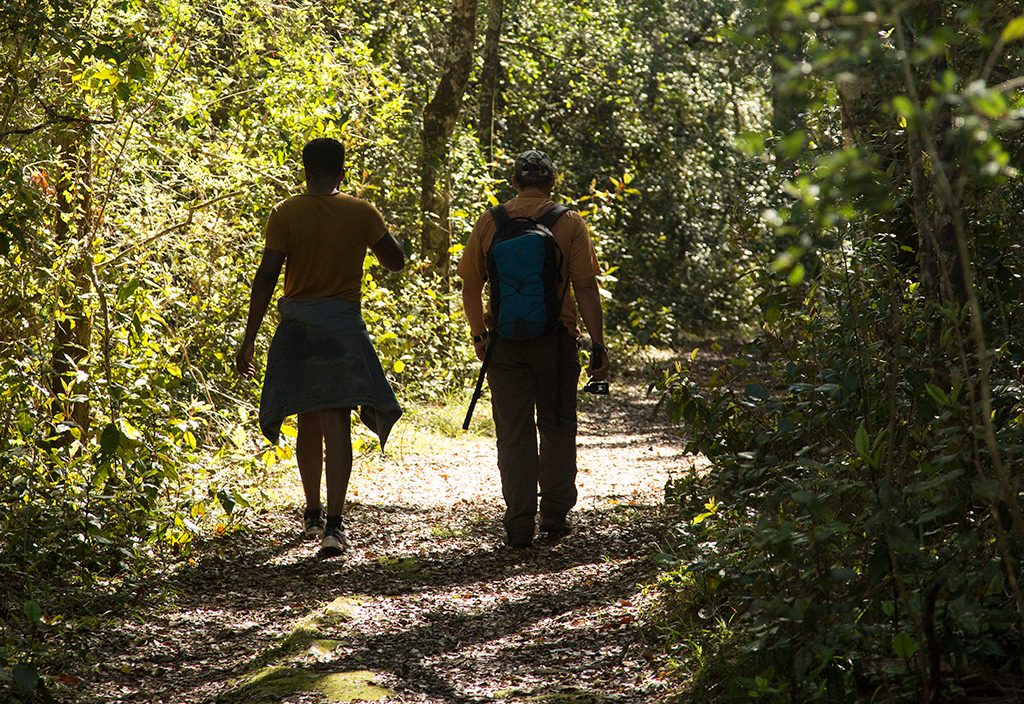
A walk through the Knysna forest with Mark Dixon from Garden Route Trails. Photograph by Tyson Jopson.
We see ironwoods and stinkwoods, an orchid growing on a tree and trunks covered in velvet-green moss. We also spy remnants of iron tools that belonged to the woodcutters who lived here from the late 1700s. They would venture out for a week, sleeping and eating in the forest. Back then, Knysna was booming as the main supplier of timber to the shipbuilding, building and transport sectors in the Cape. It’s a wonder the forests are still so massive.
This 3,6-kilometre trail is open to only a dozen people per day for safety and conservation reasons, and leads to a beautiful rock pool in the Homtini River. The water is the colour of strong tea, thanks to tannins and humic acids from fallen leaves. It’s hard to resist, so I immerse myself before hiking back up to Forest Edge for breakfast on the new lily-pond deck.
These forests are a drawcard for locals and visitors alike, and play a significant role in the town’s tourism sector, which is Knysna’s biggest economic driver. Activities in the town range from food and adventure to festivals and cultural tours.
One new initiative are Segway tours, which take in the lagoon and its surrounds on these eco-friendly vehicles. The tour starts at Mitchell’s Brewery, South Africa’s original craft brewery (it’s best to drink after you’ve driven one of these). After basic instructions and a demonstration, I take to the contraption like a pro and almost get carried away, imagining myself a Grand Prix driver.
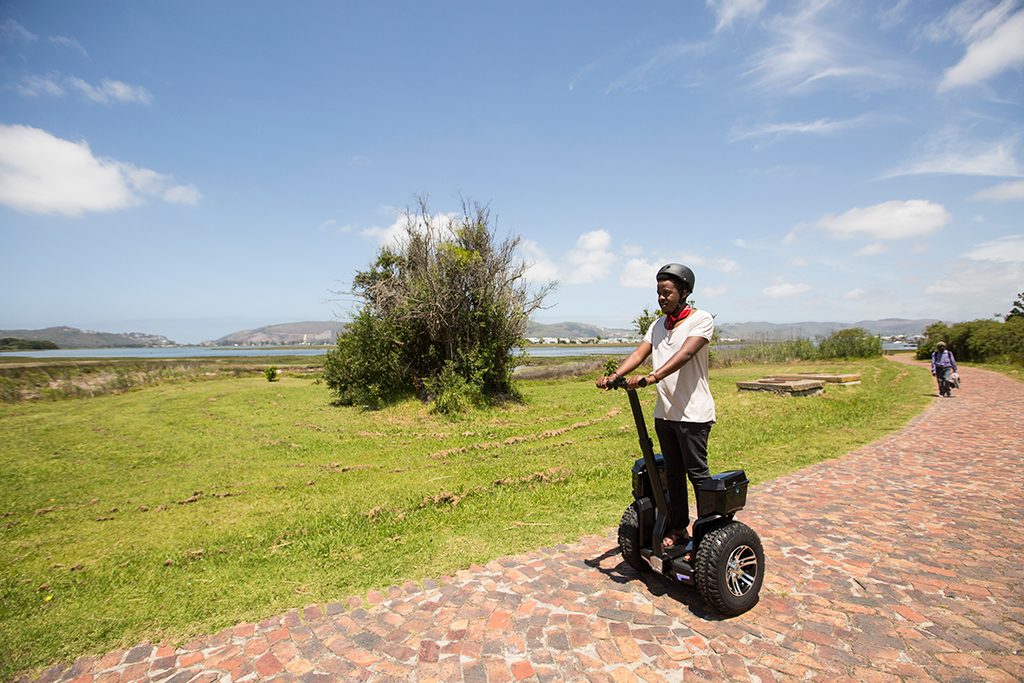
Exploring Knysna’s Lakeside promenade on a Segway tour with Knysna Segway Tours. Photograph by Gareth Van Nelson.
The going is a little slower, both literally and for my learning skills, when we head to the Swartvlei Estuary near Sedgefield to try out stand-up paddleboarding. After falling off the board a few times, I finally begin to paddle through the water, looking through the bed of seagrass. I manage to spot a few jellyfish. ‘It’s the closest you’ll get to Aladdin’s magic carpet,’ remarks Mark Dixon from Garden Route Trail when he notes the giddy smile on my face.
The next day we meet up with Mawande Yengwa, who is going to take us on a tour of Xolweni township and introduce us to some locals. Here, too, some homes were burnt and people lost their jobs due to the closure of affected businesses. However, a few such as Mawande have been working to get tourism here back on track.
‘In our tradition, a man is not allowed to wear a hat in the house nor shorts when consulting with a healer,’ says Mawande, just before we enter Nonyaniso Hele’s house. I pat the bandana on my head and pull down my shorts to cover my thighs. ‘But don’t worry, it’s totally fine,’ he says as he points me to the entrance.
We go in. She burns impepho to clear the room of any bad spirits. Initially, it feels invasive to be in her space like this without a ‘real consultation’ – shorts and all. But she doesn’t seem to mind sharing her knowledge about muthi plants.
Before we know it it’s lunchtime and we head to Emily Jonas’s house for a three-course meal. I’m instantly drawn to Emily. She is bubbly and chatty and it feels like I’m visiting one of my favourite aunts. She’s prepared vetkoek and fish for the starter, grilled chicken, spinach, pumpkin and rice for mains and a banana pudding for dessert, all washed down with a two-litre Coke. I pretty much roll out of the house.
This is the case at Rise ‘n Shine Restaurant in Judah Square, one of the biggest Rastafarian communities in the country, where some ‘holy’ herbs rolled in papery garlic skin are passed around.
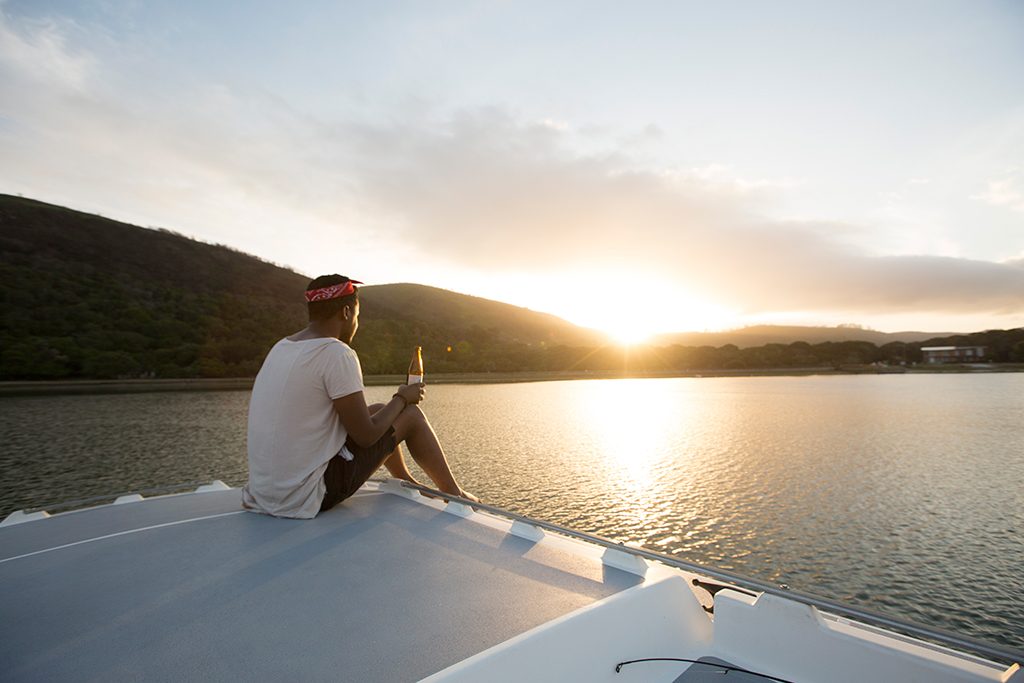
A beer to calm this houseboat skipper’s nerves. Photograph by Gareth Van Nelson.
Our last night is to be spent on board a classic Knysna houseboat, and I have volunteered to be the skipper. As soon as Thozi Sikali, the lovely lady who gave us a 45-minute instruction session on how to pilot the boat, makes way for me at the steering wheel, I sense some uncertainty. And as I pull away from the quay, she yells, ‘The kill switch! Put on the kill switch!’
I turn around to look at her for encouragement and see a slightly anxious look on her face. ‘Look where you’re going, Welcome!’ she yells.
I look ahead and there’s a massive yacht in front of us.
‘Uh-oh,’ I say, turning to Gareth.
‘You can’t say uh-oh when there’s a multimillion-rand yacht in front of us, bru,’ says Gareth.
We find the nearest mooring, tether the boat and after a few de-stressing beers, spend the afternoon swimming, trying our hand at fishing and watching the sun set. In the morning, after watching the sun rise, we call Thozi to come and fetch us – wrecking fancy yachts is not on my Knysna bucket list.
Plan your trip
Getting there
The drive from Cape Town on the N2 takes about six hours, including a quick stop at the Houw Hoek Farm Stall near Grabouw for its famous pies. You can fly from Johannesburg to George with FlySafair for about R1300 return. The drive from the airport to Knysna is about an hour. flysafair.co.za
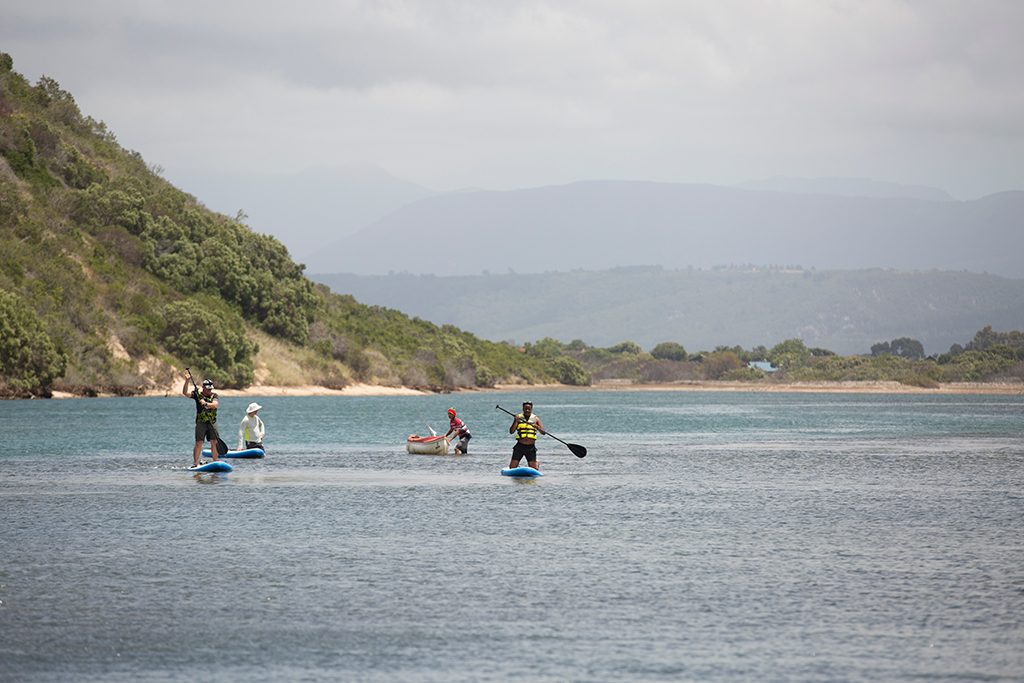
The Swartvlei Estuary near Sedgefield is a safe and calm spot for learning how to balance on a stand-up paddleboard. Photograph by Gareth Van Nelson.
Need to know
The fire damage was severe in Brenton, but most places in Knysna and surrounding areas are open for business. The town’s popular Oyster Festival was hosted last year just a few weeks after the fires, to give you an idea of the area’s resilience. If you are going this year (29 June to 8 July), book your place to stay well in advance.
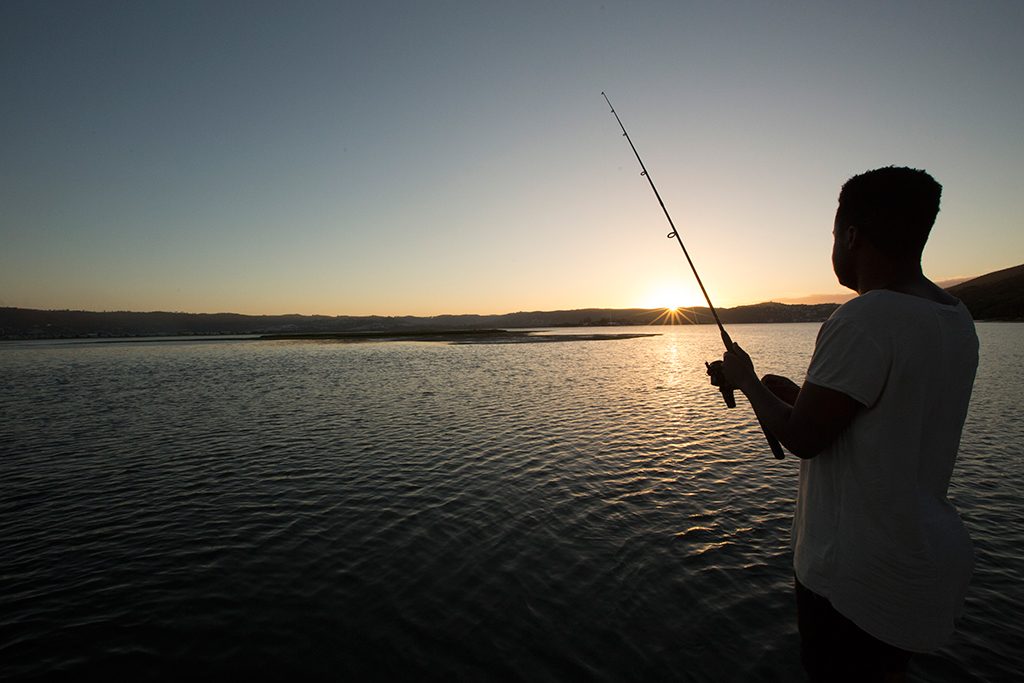
Trying to catch a fish at dawn after spending the night on the Knysna House Boat. Photograph by Gareth Van Nelson.
Do this
Hike the Drupkelders Trail for a swim in a rock pool. The path is a little steep but short, so average fitness is all that is needed. Get a permit from the SANParks office on Thesen Island. R30 per person for adults, R15 kids. 0443025600
Explore township life with Mawande Yengwa, who will guide you through places such as Concordia, Khayalethu, Xolweni and Nekkies. The three-hour tour with local lunch costs R400 per person. A full-day tour also includes Knysna town and costs R1150 per person. [email protected], 0711533017
Go stand-up paddleboarding on the Swartvlei Estuary near Sedgefield or on the Knysna Lagoon (tides permitting – it can get choppy on the water) with Garden Route Trail. They can tailor an excursion based on your interests and skill level. A three-hour outing costs from R1200 per person, including champagne breakfast. gardenroutetrail.co.za
Hop on a Segway for an hour-long lakeside guided jaunt along the promenade in the waterfront area. Tours start and end at Mitchell’s Brewery, where you can enjoy a beer afterwards. R300 per person. knysnasegwaytours.co.za
See seahorses. Knysna is known for its endangered, endemic seahorses, but because they are so small and camouflaged they’re difficult to spot in the lagoon. Rather head to the SANParks offices on Thesen Island to see the seahorses they have in tanks. Free entry. 0443025600
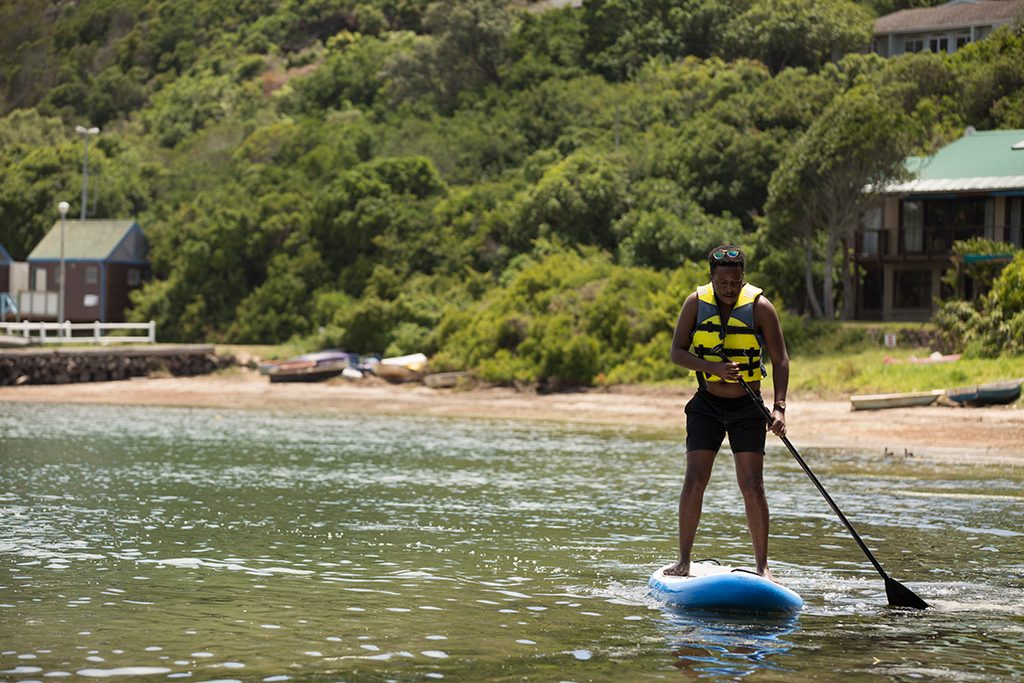
Finally getting the hand of stand up paddleboarding. Photograph by Gareth Van Nelson.
Eat here
Bazala, at the Waterfront, serves delicious South African food. I especially enjoyed the Big Boerie burger (R75) with roosterkoek and chakalaka. There’s also a Sunday roast for R95 per person. 0443821693
Rise ‘n Shine Restaurant in Judah Square is strictly vegetarian, and does smoothies and Caribbean-style dishes. R100 per person for a starter, main and dessert; booking essential. 0734227114 or 0781801172
East Head Café serves delicious, healthy food with a view of the Knysna Heads. On a sunny day, the outside area is blissful. The calamari cost R94. 0443840933
Île de Païn is an artisanal bakery and restaurant on Thesen Island everyone raves about. Awesome rolls for R68. 0443025705
Stay here
Forest Edge is on the doorstep of some of Knysna’s best forest trails and the five self-catering cottages are tranquil and comfortable. From R512 per person sharing (each cottage sleeps four). Dinner and breakfast on request. forestedge.co.za
Dover on Sea Beachfront B&B in Sedgefield is a 20-minute drive from Knysna, and has glorious sea views. From R800 per person sharing, including breakfast. doveronsea.co.za
Knysna Houseboats was a highlight of my trip. Fitted out with a bedroom (the sheets were super comfy), kitchen and lounge area with an extra sofa bed. From R1815 for two and R198 per person extra. The boats sleep four. knysnahouseboats.com
This article first appeared in the April 2018 issue of Getaway magazine.
Our April issue features 13 campsites in Kruger National Park, a visit to Vietnam’s capital, Welcome Lishivha returns to Knysna one year after the fires and Melanie Van Zyl finds the best of both worlds in Mauritius, plus lots more.
